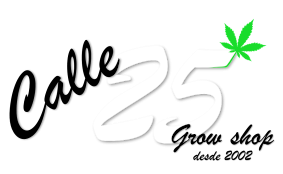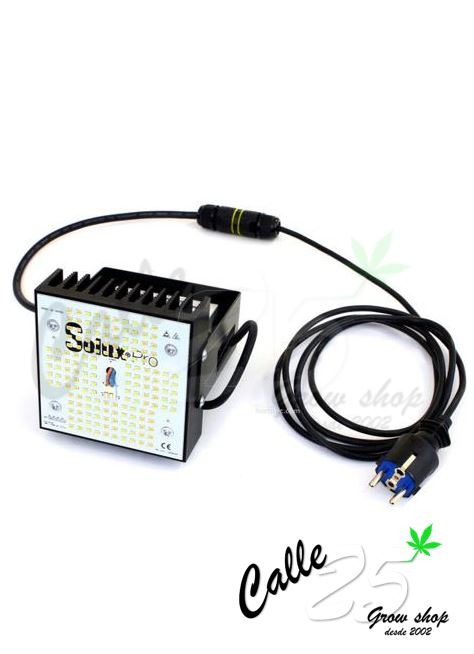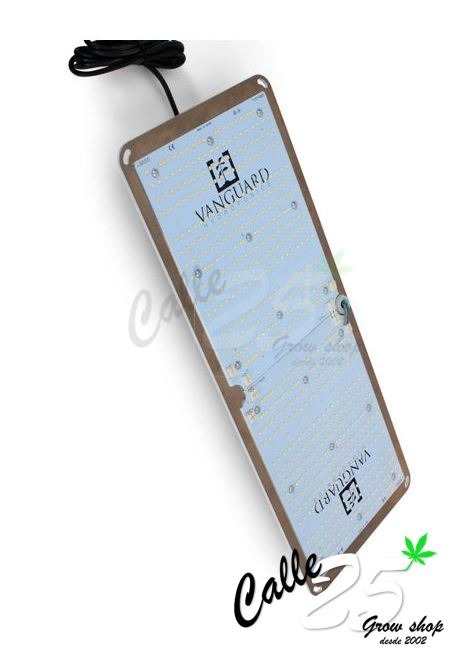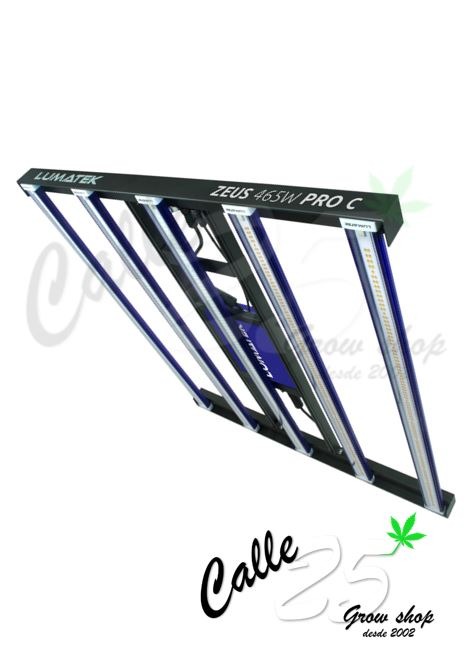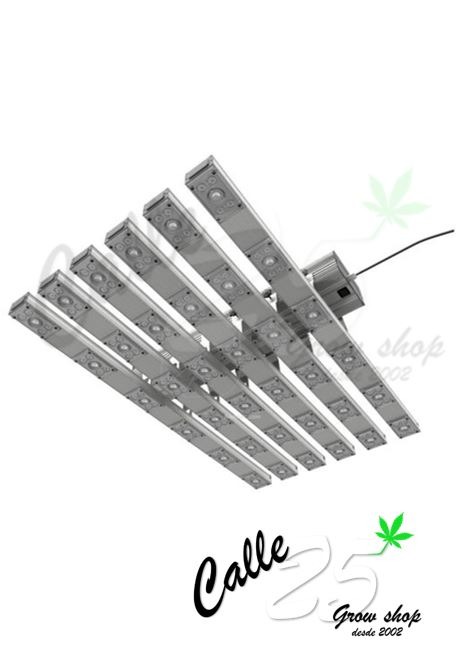
Advantages and disadvantages of growing with LED systems.
Advantages and disadvantages of LED growing
Like many products in the cannabis world there are advantages and disadvantages for the grower, so if you are thinking of buying an LED lighting system, in this blog post we want you to know some of the pros and cons of indoor LED growing. In our online grow shop we tell you everything in detail!
Advantages.
First of all, we will start by talking about the advantages of these LED systems, which are many compared to other conventional lighting systems used to date.
Energy savings.
The clearest advantage, which is usually the main reason to be interested in acquiring an LED system, is that compared to any other lighting system, it has greater energy savings. Energy consumption is lower than other systems, as LED panels can use up to 50% less energy, depending on the system.
Less heat.
LED cultivation produces much less heat, so we also save on extraction systems as the air output power to extract the heat will not be as high, while we do not run the risk of burning the plants due to heat or climatic stress. By producing less heat, we can bring the luminaire much closer to the plants, allowing for better light absorption.
This allows us to grow in times when the outside temperature is higher, or if we live in a warm area.
By receiving lower heat irradiation, the terpenes produced by our plants will be much less volatized, reducing the odours given off by the cannabis during cultivation and improving the quality of the final product.
More safety.
Many LED lighting systems have opted to provide a passive cooling system with no moving parts. By not having fans to extract the hot air, we still save on power and gain in safety.
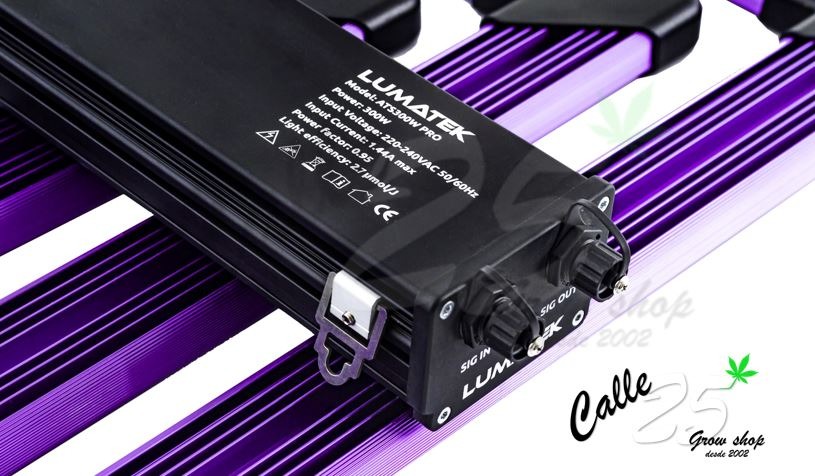
In this picture we can see an example of the LED System ATS 300 PRO, which incorporates a passive cooling system.
Less irrigation water.
By producing less heat our plants evaporate and absorb less water, as the soil will remain moist for longer and we will reduce the number of times we water, so we will also save on water.
Less fertiliser.
But that's not all. Logically, by reducing the amount of water, we also reduce the amount of fertiliser we use. We save water and money on fertiliser as we will spend less. By using less fertiliser, we will reduce the accumulation of nutrients, producing less salts in the roots and reducing nutrient blockage. So we will have less risk of deficiencies in our plants.
Higher quality.
Unlike the old LEDs, there has been a qualitative increase in terms of manufacturing materials, types of LEDs, light spectrum, light intensity, etc. Thanks to this increase in quality in the spectrum of light and the light intensity that they receive, our plants absorb much more light and with greater intensity, thus achieving better performance, producing larger plants that become more abundant harvests, with more beautiful and quality flowers.
Longer life.
The lifespan of an LED system compared to a conventional lighting system, such as an HPS lighting kit, is incredible. While an HPS bulb can last a year, an LED system can last, depending on each system, a minimum of 50,000 hours of use, which translates into about 8 years, with LED systems that can last 10 years without the need to change our lighting system. In all the years of use it will not lose light output, i.e. we will lose light output.
Thanks to the long life of the LED system, it will not be necessary to replace any of the components due to wear and tear, so we will save at least 8 years of buying bulbs and changing ballasts. We can say that it also has a very low maintenance cost.
Easy to assemble.
As it has a built-in ballast and does not need a bulb to work, we will not have to connect cables from the ballast to the reflector and from the reflector, just plug the LED panel to the mains and it will be ready for use.
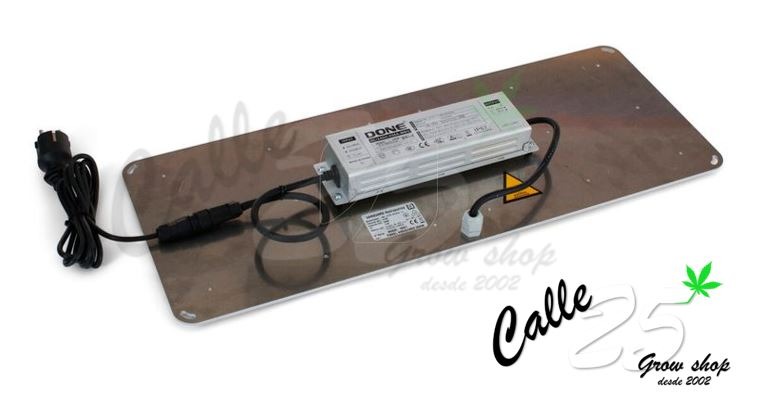
The Cosmos LED system has a built-in ballast and as we can see we only have to connect the plug to the mains.
Disadvantages.
In the world of cannabis there is practically no product that does not have any disadvantages, but when there are more advantages than disadvantages, you have to evaluate and buy, if it is really worth it or not. The same thing happens with LED panels, we have many advantages and although there are very few, we also have disadvantages.
Price of an LED system.
There are many different LED systems on the market today, of different qualities and at different prices. The main problem when purchasing an LED luminaire is the price. A quality LED can cost considerably more than a conventional lighting system. The initial investment to be made is usually expensive, although as we have seen in the advantages, we will quickly recover the investment with the energy savings, materials, such as bulbs or ballasts, fertilisers, etc.
Cheap LED system models.
As we have just seen, there are different types of systems, varying in price and quality. Normally we meet customers who have decided to get a cheap LED system, but the quality or the yield of their crop has not been the best. Cheap LED or Chinese LED models usually produce inferior results, because the light spectrum and light intensity is too low to produce cannabis plants in the best conditions. That's why we recommend to look at the characteristics of each LED system and know what you really need. Haven't you seen our blog "Characteristics to consider about LED lights" yet?
Less heat.
An advantage can also be a disadvantage: by producing less heat, our plant will not open all of its stomata, which are responsible for the plant to breathe and carry out photosynthesis. This means that the plant absorbs less water and consequently less nutrients.
If we live in cold areas it will be necessary to use a heating system to increase the temperature of the indoor crop, if and when necessary. In our blog growing marijuana indoors you will find the necessary temperature parameters.
Higher humidity.
Humidity is one of the most important parameters to take into account when growing cannabis indoors, as there is less heat, humidity increases. If we have a low temperature we will increase the risk of increased humidity, which can lead to fungus in our crop, climatic stress, among others. If this happens, it can be solved by installing a dehumidifier.
Irrigation water.
If the temperature of our crop is below the parameters, and the humidity has risen, we will have to be very careful with the water supply. One of the advantages was that our plants would receive less water, so if we are used to growing with an HPS lighting system for example, watering should be more constant than with an LED grow panel. An LED system needs less water, so we have to be careful not to overwater, otherwise we might drown them.
Light colour.
The colour of the light benefits the growth of our plant, but it can offer less defence against some types of insect pests. For this reason we always recommend the use of preventive products. If you are also prone to insect or disease problems we recommend that you take a look at our blog post "Products, Dosage tables and how to use".
Now that we have seen some of the advantages and disadvantages of LED systems, we should think about whether the advantages are enough to purchase an LED system or not. At Calle25 we believe that as technology advances, the leap in quality it makes is enormous, and we vehemently recommend growing cannabis with LEDs, taking into account the many advantages they offer, the few disadvantages and the easy solutions they present.
If you have decided to buy LED systems, but you don't know which LED system you need for your crop, we recommend you to have a look at "How many watts do i need for my indoor LED grow"
Here we leave you with some of Calle25's best-selling LED systems.
